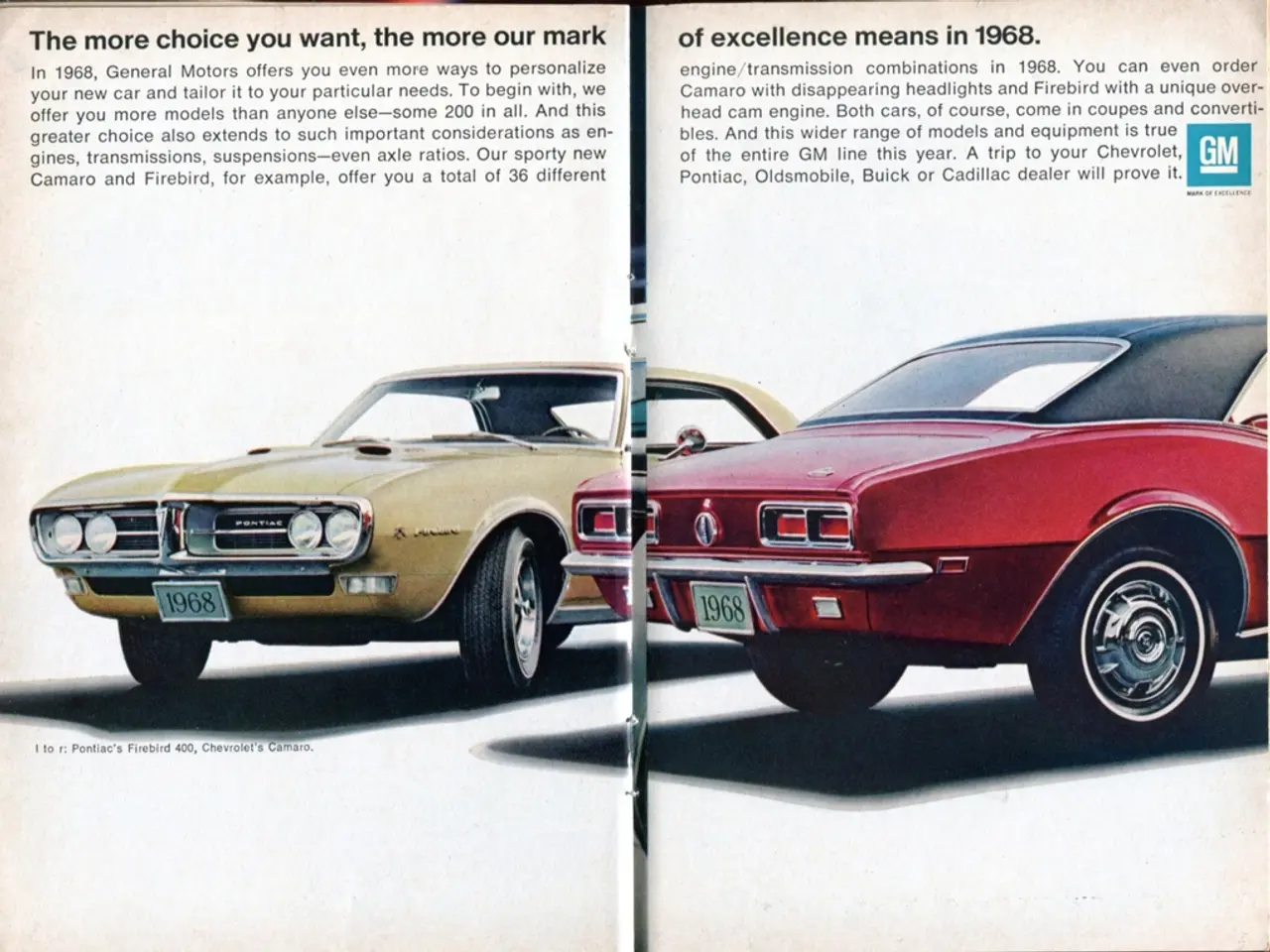Rivian's Q2 2025 report reveals: Despite the limited R1 model's production, deliveries are unaffected; the R2 model remains on schedule.
Rivian Reports Mixed Results for H1 2025, Anticipates Peak Delivery Quarter in Q3
Rivian, the electric vehicle manufacturer, has released its financial and production reports for the first half of 2025, revealing a mixed bag of results. While the company experienced growth in revenues, it faced challenges in production and profitability due to tariffs and reduced regulatory credit income.
Financial Highlights
For the first half of 2025, Rivian's total revenue was approximately $2.5 billion, with second-quarter revenue reported at $1.3 billion, up 12-13% year-over-year. However, Rivian returned to a negative gross profit on a GAAP basis in Q2 2025 after two quarters of positive gross profit, impacted by increased costs, supply chain issues, and tariffs.
Production and Deliveries
Production was significantly down in Q2 2025: only 5,979 vehicles were produced, a steep decline from 14,611 in Q1 2025, largely due to supply chain constraints and trade policy shifts. Despite the production slump, deliveries for Q2 2025 increased to 10,661 vehicles from 8,640 in Q1, totaling approximately 19,301 deliveries in the first half of 2025 across consumer and commercial vehicles.
Profit Outlook
Rivian lowered its 2025 profit expectations to roughly breakeven gross profit due to reduced regulatory credit sales (expected $160 million vs prior $300 million) and tariff impacts adding a few thousand dollars in cost per vehicle. Adjusted EBITDA losses guidance was widened to between $2.0 billion and $2.25 billion for the full year 2025.
Future Plans
Rivian maintains its full-year delivery target of 40,000 to 46,000 vehicles and expects Q3 2025 to be the peak delivery quarter of the year, surpassing Q2 deliveries, despite production challenges earlier in the year. The company plans to achieve this by increasing its manufacturing capacity to about 215,000 units per year through shutting down its existing production footprint in Illinois for about three weeks in September to make room for R2 production.
Capital Expenditures and Investments
Capital expenditures for 2025 are expected between $1.8 billion and $1.9 billion to support growth and the launch of the R2 platform planned in 2026. A major $1 billion equity investment from Volkswagen Group was received in Q2 2025, with further $1.5 billion expected next year subject to milestones.
Expansion Plans
In addition to its financial reports, Rivian announced the establishment of a new UK office and a new East Coast headquarters located outside of Atlanta. The company aims to expand its global footprint and strengthen its presence in key markets.
In summary, Rivian’s H1 2025 saw steady revenue growth but constrained production and profitability pressures from tariffs and reduced regulatory credit income. While deliveries for Q2 improved, production was still low, with Q3 expected to be the delivery peak as Rivian pushes toward its annual target of 40,000-46,000 vehicles. Gross profit remains challenged with roughly break-even expectations for full-year 2025.
The electric vehicle manufacturer, Rivian, anticipates investing in its global footprint expansion with the establishment of a new UK office and an East Coast headquarters. In the realm of business, Rivian is seeking technology advancements by launching the R2 platform in 2026, which could potentially lead to increased profits. Despite the challenges faced in H1 2025, Rivian continues to invest in green energy by focusing on electric vehicles, particularly by increasing manufacturing capacity for a peak delivery quarter in Q3.




